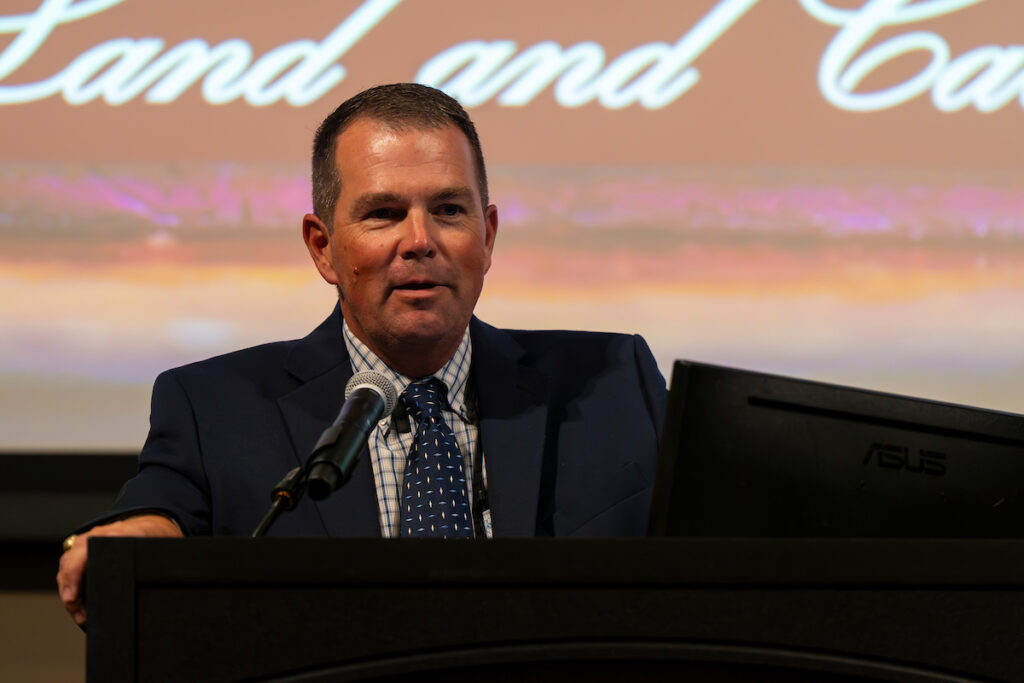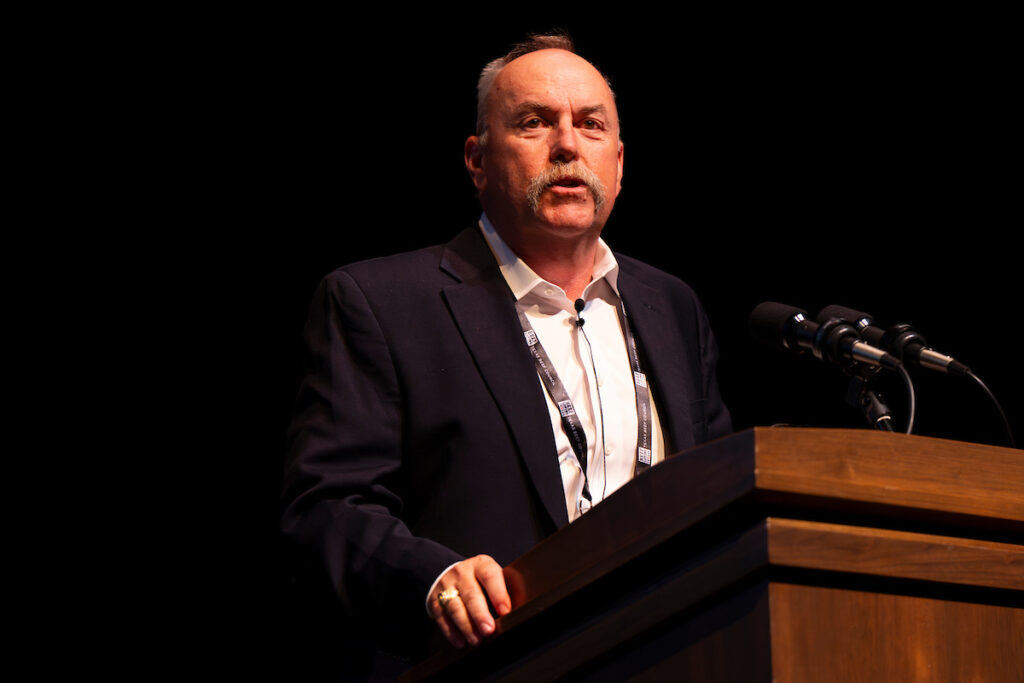Cow-calf producers weigh options for herd replacements
AgriLife Extension experts offer advice for rebuilding the herd
At the current time, economic and climate conditions forecast for the coming months/years cast some doubt on the proposition of expanding the cow herd rapidly, according to Texas A&M AgriLife Extension Service experts.
Ranchers should expect volatility in the markets and weather as they make plans to expand their cow herds.

That was the message for Texas beef producers at the 70th annual Texas A&M Beef Cattle Short Course, hosted by AgriLife Extension and the Texas A&M College of Agriculture and Life Sciences Department of Animal Science.
More than 1,800 attended the annual event, which was themed “Rebuilding the Cow Herd.”
Texas ranchers find themselves in a similar situation as the drought of 2011-2012, which led to deep culling and herd consolidations. But not all is the same this time.
With some of the lowest cow numbers in the U.S., the market indicates now is a good time for ranchers to start rebuilding their cow herds, but careful consideration is needed on many decisions to ensure mistakes are not repeated, said Jason Cleere, Ph.D., conference coordinator and AgriLife Extension beef cattle specialist in the Department of Animal Science, Bryan-College Station.
“We wanted to provide some tools for ranchers to begin to decide what they can afford for replacement heifers,” Cleere said. “The short course provided a lot of scientific and experiential knowledge ranchers took home and hopefully can apply to their operations with short-term and long-term success.”
Returns aren’t materializing yet
David Anderson, Ph.D., AgriLife Extension livestock marketing economist and professor in the Department of Agricultural Economics, Bryan-College Station, said a decade ago, there were record high calf prices, and the expansion took place faster than many thought possible.

Several reasons exist for expansion to be slower this time, Anderson said, including higher input costs, interest rates and discounts on the futures market that are keeping the return over cash costs low.
“Even with record high prices, that doesn’t correspond to record high returns,” he said. “Economically, we’ve seen no real indication of expansion because the returns haven’t been there to make it worthwhile.”
Anderson said the last time around should remind ranchers they can pay too much for replacements if they aren’t careful.
“The calf crop and productivity are the most important factors going forward,” he said. “If the cow doesn’t make a calf every year, that takes away from what I can pay. Replacements this time will be the most expensive ever, at record highs. But so are the calf prices.”
He said it is important to know operational costs and the factors that could determine what price is too high.
“You don’t want to still be paying for those replacements when they are long gone,” Anderson said.
Finding the right scenario for your ranch
One key part of the equation for rebuilding the herd is selecting replacement females – and there are about 16 options ranchers could make, said Ron Gill, Ph.D., AgriLife Extension beef cattle specialist and professor in the Department of Animal Science, Stephenville.

Ranchers must consider if they want to retain ownership of their own heifers or buy lightweight or heavyweight heifers, bred heifers, first-calf pairs, three-in-one sets, older or younger bred cows, pairs of cows and calves of different ages, or open females that all range in prices and availability.
“Looking at these different options may not be the normal way to do things, but this is a unique scenario we are in,” Gill said.
Some things for ranchers to consider when determining the best females to rebuild their herd include environmental adaptability, mature size, calving difficulty and marketability.
“You want to build in some flexibility to your beef system to prevent forced management,” Gill said. “Last time, we spent a lot of money on females in rebuilding, and then some folks were forced to sell a lot of them pretty quick before they had them paid off.”
Economic management considerations
Gill weighed in on some of the key economic management aspects of that selection process:
— What is the quantity and quality of the animals available? That helps determine what you can select.
Save the date
The 71st annual Texas A&M Beef Cattle Short Course is scheduled for Aug. 4-6, 2025.
— What is your initial investment cost? That can be a pretty big number, so you want to make sure you get it right.
— Development phase – How long until the first calf is on the ground, and what will it cost? Should we pay more upfront for an animal that will produce faster?
— Rebreeding potential – Sometimes, we grossly underestimate the culling percentages of purchased cattle. In my experience, within three years, 50% will be gone. You need to be able to cull them to make the upfront cost work. If they can’t make that run, their cost must be covered by the remaining cattle.
— Market flexibility – If the weather turns against you, how easy will it be to get rid of them at the price needed? For instance, if you buy large heifers and the market or weather turns, you can sell them as feeder cattle. Or you can sell them to someone else as breeding females.
Gill said some other factors ranchers should consider are genetic potential, longevity, dystocia, weaning weight, nutritional requirements and cull rate.
Compare the different variables
Timing to get a calf on the ground is everything in this rebuilding phase, Gill said.
Retaining herd heifers may mean their first calf won’t drop until the market starts to change, he said. So, buying a higher-priced female that will have a calf before that might be better. However, that’s where those risk factors must be weighed to avoid losses in the long run.
“If you look at it from a purely economic standpoint, you might look at selling your heifers and buying a female to run during this period that will sell calves for you,” Gill said. “Then you can purchase lightweight heifers and be ready to breed.”
There’s also the choice of buying bred heifers. There’s a higher cost involved in that, but they can put a calf on the ground sooner.
“You need to be considering at least a three-year period, and you need to raise heifers you have the most confidence in,” Gill said. “That development phase, the cost to grow them and being able to participate in this high market might be where you want to rethink some things. But also, if you chase some fad or opportunity, you can mess up your whole system. So, if you have a good system, don’t necessarily go chase rabbits.”
More details are available in a document, Evaluating Replacement Female Alternatives, co-authored by Gill.





